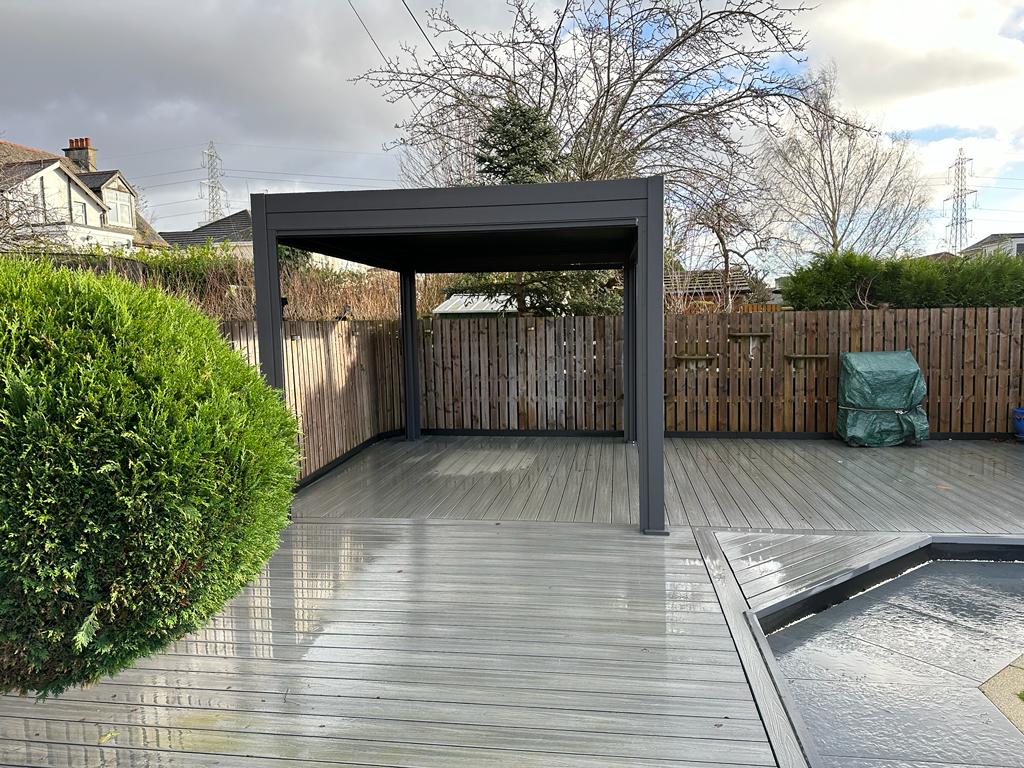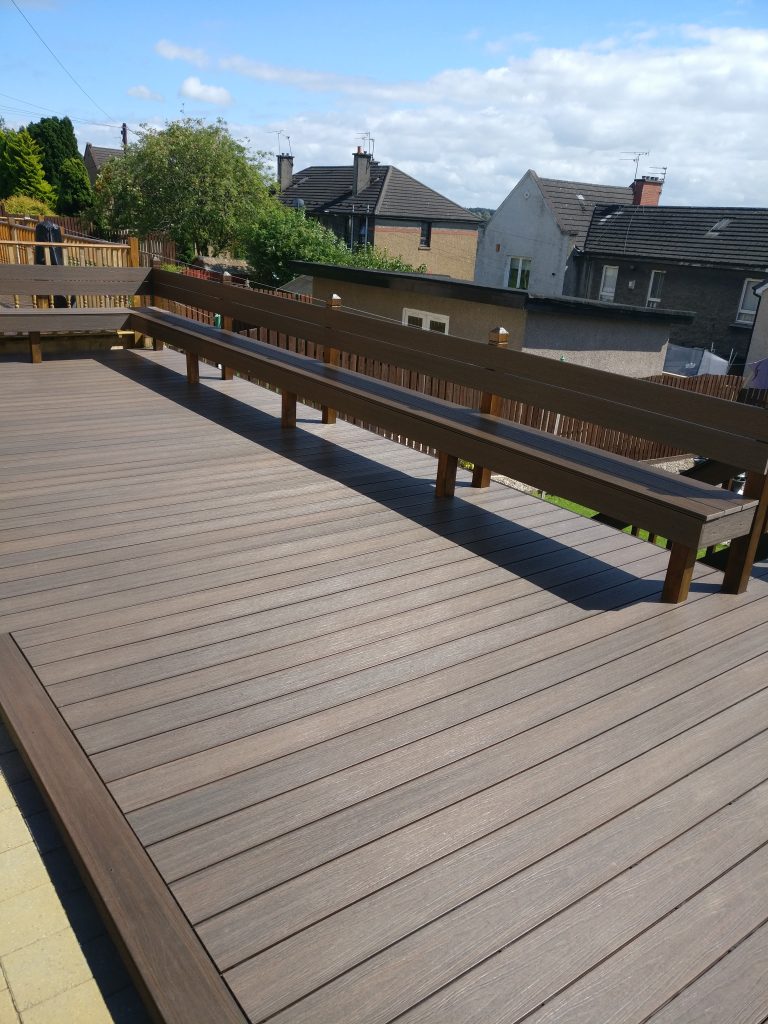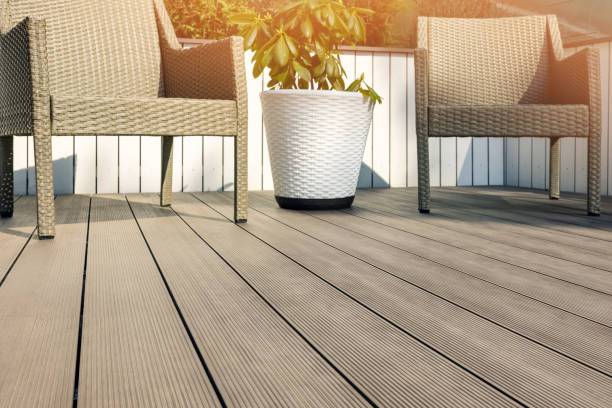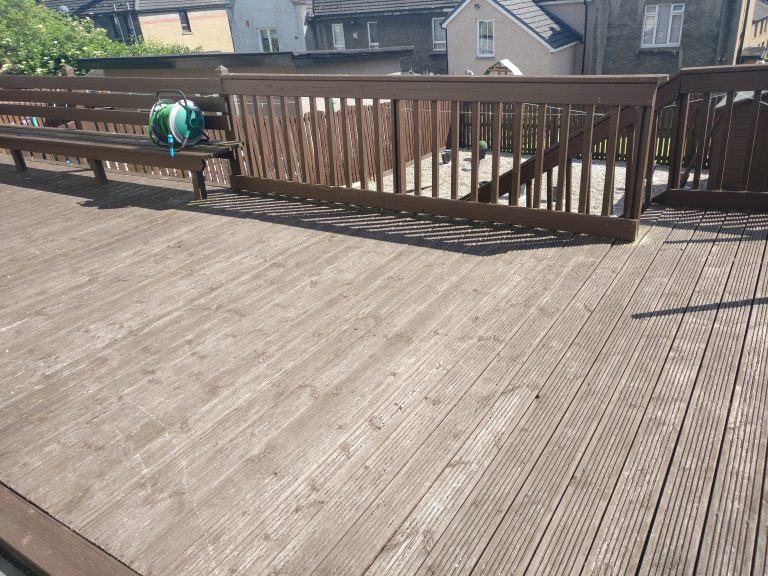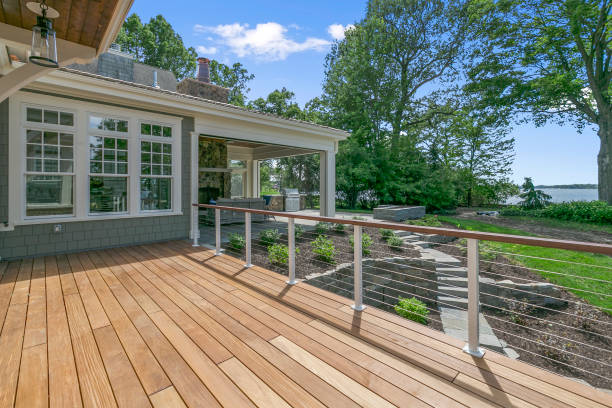Composite decking has gained immense popularity as a versatile and durable alternative to traditional wood decks. If you’re considering using composite decking for your outdoor space, you may have wondered whether it can be installed directly on concrete.
In this comprehensive guide, we’ll explore the benefits of composite decking, the feasibility of installing it on concrete, alternative installation methods, and essential considerations before embarking on the project. Whether you’re a homeowner or a contractor, this article will provide valuable insights to help you make informed decisions and achieve a stunning outdoor living area.
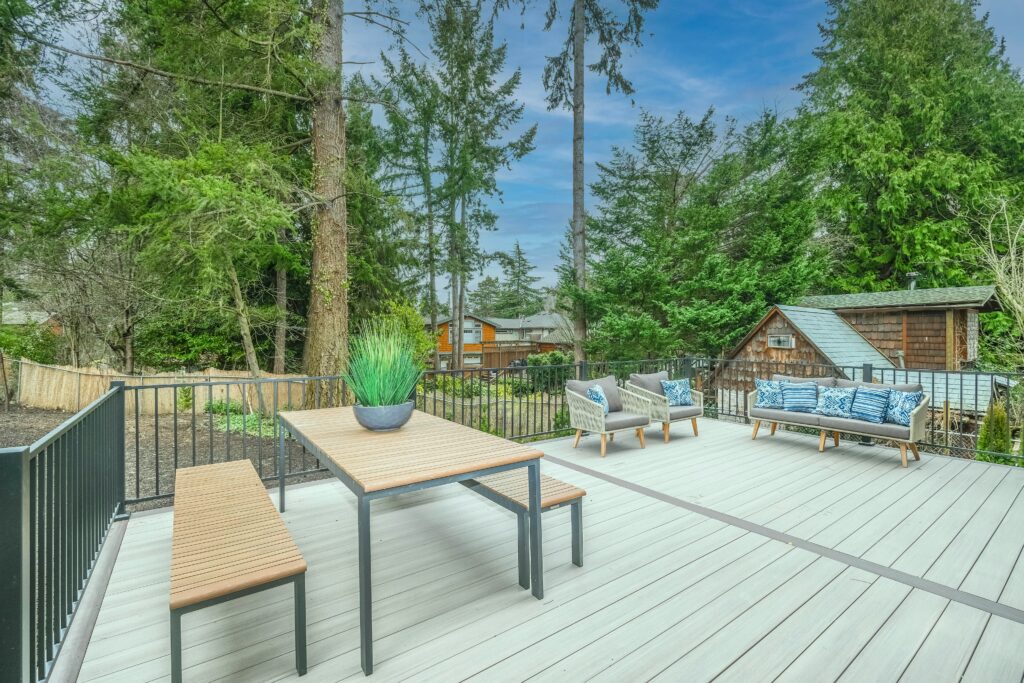
What is Composite Decking?
Composite decking, an alternative outdoor decking material, is a durable and versatile option that offers a wide range of benefits and advantages for outdoor spaces.
It is made from a combination of wood fibres and recycled plastic, providing a sustainable and eco-friendly choice for outdoor projects. With a diverse selection of colours and textures, composite decking can mimic the appearance of natural wood while requiring minimal maintenance. Its resistance to rot, mould, and insects makes it ideal for withstanding the outdoor elements, ensuring long-term durability.
Composite decking is splinter-free, providing a safe and comfortable surface for families and individuals to enjoy outdoor activities.
What are the Benefits of Using Composite Decking?
Using composite decking presents various benefits, including:
- Exceptional durability
- Appealing appearance
- Minimal maintenance requirements
Making it a preferred choice for outdoor decking.
Durability
Composite decking is renowned for its exceptional durability, ensuring longevity and structural integrity in outdoor environments, which sets it apart from traditional decking materials.
This type of decking material is specifically engineered to withstand the harshest outdoor conditions, such as extreme temperatures, moisture, and UV exposure, without warping, rotting, or splintering. Its robust nature comes from the combination of wood fibres and recycled plastic, which creates a strong, resilient composite. Composite decking requires minimal maintenance, making it a practical and long-lasting choice for outdoor spaces.
Low Maintenance
One of the key benefits of composite decking is its low maintenance requirements, which can be easily managed by following manufacturer’s guidelines and best practices for upkeep.
This type of decking material is designed to resist fading, staining, and mould without the need for regular painting, sealing, or staining. To maintain its pristine appearance, simple cleaning methods such as regular sweeping and occasional washing with mild soap and water are usually sufficient. Most composite decking manufacturers also offer specific maintenance recommendations to ensure the longevity of the product, including avoiding abrasive cleaners and certain chemicals that could damage the material.
Environmentally Friendly
Composite decking offers an environmentally friendly decking solution, contributing to reduced environmental impact compared to traditional decking materials, aligning with sustainable practices and preferences.
This innovative decking material is made from a blend of recycled wood fibres and plastic, diverting waste from landfills and reducing the need for virgin materials. Composite decking also requires minimal maintenance and does not contribute to deforestation, further enhancing its eco-friendly profile.
The longevity of composite decking means less frequent replacement, sparing natural resources and minimising the overall ecological footprint associated with decking installations.
Can Composite Decking Be Installed Directly on Concrete?
One common question is whether composite decking can be installed directly on concrete, which involves considerations of moisture, compatibility, and proper installation methods.
When considering installing composite decking on concrete, it’s essential to address potential moisture issues. Concrete can retain moisture, which could affect the performance of the decking material over time. Ensuring compatibility between the composite decking and the concrete surface is crucial to prevent any structural or aesthetic issues.
Proper installation methods, such as using a sleeper system or adjustable pedestals, are often recommended to create a stable and level surface for the decking, allowing adequate airflow to minimise moisture buildup. Taking these considerations into account will help ensure a successful and long-lasting composite decking installation on concrete.
What Are the Steps for Installing Composite Decking on Concrete?
Installing composite decking on concrete involves specific steps, methods and useful tips to ensure a successful and reliable installation process, adhering to best practices and recommendations. To begin, it’s essential to prepare the concrete surface thoroughly by cleaning and levelling it. Once the surface is prepped, install sleepers or bearers to create a framework for the decking boards. Ensure proper spacing and alignment to support the composite decking effectively. When placing the boards, use corrosion-resistant fasteners to secure them firmly in place. It’s crucial to check for any potential drainage issues and address them before completing the installation. Consider using a protective membrane to prevent moisture from seeping into the concrete, prolonging the lifespan of your composite decking.
What are the alternatives to installing composite decking on concrete?
When considering alternatives to installing composite decking on concrete, surface preparation and the use of alternative materials such as sleepers, adhesives, or a raised deck should be evaluated for compatibility and suitability.
In some cases, using sleepers – small support pieces that elevate the deck – can be a viable alternative. Adhesives can also be used to directly attach the composite decking to the prepared surface. Another option is to opt for a raised deck, which can provide added protection against moisture and offer a more traditional deck appearance. Each method has its advantages and considerations, so it’s essential to weigh the options carefully before making a decision.
Using Sleepers or Joists
Using sleepers or joists as a substructure for composite decking offers a practical alternative for outdoor applications, ensuring compatibility and structural support in challenging installation scenarios.
This approach is particularly advantageous for areas with irregular slopes or uneven surfaces, as it provides a versatile solution to accommodate such variations. The use of sleepers or joists promotes airflow beneath the decking, preventing moisture build-up and potential rot. This contributes to the overall longevity and durability of the composite decking, reducing the risk of deterioration over time.
The combination of composite decking with properly installed sleepers or joists can enhance the aesthetic appeal and functionality of outdoor spaces, providing a solid foundation for leisure and relaxation.
Using Adhesive or Screws
Adhering composite decking to concrete using suitable adhesive or utilising screws for secure attachment presents an alternative approach, considering factors such as expansion, contraction, and effective installation methods.
This installation method requires careful consideration of the compatibility of the adhesive or screws with the concrete surface and the composite decking material. In addition, the potential for expansion and contraction of the composite decking due to temperature variations should be factored into the installation process to prevent issues such as warping or buckling.
Proper preparation of the concrete surface, such as cleaning and levelling, is crucial for ensuring a smooth and durable installation. Using appropriate installation techniques, such as evenly spacing the screws or applying uniform pressure with the adhesive, can contribute to a successful and long-lasting installation.
Building a Raised Deck
Constructing a raised deck as an alternative to direct installation on concrete offers design flexibility and compatibility with composite decking, providing a versatile and functional outdoor space solution.
This approach allows for the creation of multi-level areas, creating interesting and dynamic outdoor spaces. Raised decks also provide the opportunity to integrate various features, such as built-in seating, planters, and lighting, enhancing both the aesthetic appeal and usability of the deck.
The elevation can offer better views and improved airflow, contributing to a more enjoyable outdoor experience. It’s important to consider factors such as local building codes, drainage, and structural support when planning the construction of a raised deck.
What are the things to consider before installing composite decking on concrete?
Before embarking on composite decking installation on concrete, essential considerations such as moisture barrier implementation, ventilation requirements, and adherence to local building codes and permits should be thoroughly evaluated.
A moisture barrier is crucial to prevent moisture from seeping through the concrete and impacting the structural integrity of the composite decking. Proper ventilation helps in air circulation, preventing any potential moisture build-up that can lead to mould or mildew.
It is essential to research and comply with local building regulations and obtain the necessary permits to ensure the installation meets safety and quality standards, thus ensuring a durable and compliant composite decking structure.
Check for Drainage
Assessing the drainage capabilities of the concrete surface is crucial before installing composite decking, ensuring proper moisture management and adhering to recommended drainage practices.
This critical step plays a vital role in preventing moisture build-up, which can lead to issues such as mould, mildew, and structural damage. Proper drainage ensures that water is effectively directed away from the deck, preserving the integrity of the materials and prolonging the lifespan of the installation. Implementing recommended drainage practices, such as sloping the concrete surface away from the structure and using appropriate drainage systems, further enhances the longevity and performance of the composite decking.
Ensure Proper Ventilation
Proper ventilation is essential for composite decking on concrete to accommodate expansion, contraction, and environmental changes, ensuring the structural integrity and longevity of the decking material.
This is particularly crucial in outdoor settings where the decking is exposed to varying temperatures and humidity levels. Without adequate ventilation, the composite material can experience warping, buckling, or even structural damage. Proper airflow beneath the decking also helps in reducing moisture build-up, preventing mould, mildew, and rot.
By allowing for proper ventilation, the decking can maintain its stability, appearance, and overall performance, ensuring a durable and attractive outdoor living space.
Consider the Weight of the Decking
Considering the weight of the composite decking and its impact on the concrete surface and substructure is crucial, ensuring compliance with local regulations and structural integrity for the installation.
It is imperative to assess the load-bearing capacity of the concrete surface and substructure as per the regulatory standards before commencing the installation. Adhering to these requirements not only guarantees safety but also avoids potential structural issues in the long term.
Understanding the weight distribution and how it interacts with the substructure is essential for maintaining the longevity and stability of the decking. Therefore, careful evaluation and adherence to weight-related considerations are fundamental in achieving a durable and compliant composite decking installation.
Verify building codes and permits.
Adhering to local building codes and permit regulations is essential before installing composite decking on concrete, ensuring compliance with construction standards and legal requirements for the project.
It is crucial to obtain the necessary permits from the local authorities before proceeding with the installation. This not only ensures that the construction meets safety and structural standards but also helps in avoiding any legal complications in the future. By following these regulations, homeowners can rest assured that their composite decking is installed in accordance with the established guidelines, enhancing the longevity and safety of their outdoor space.

